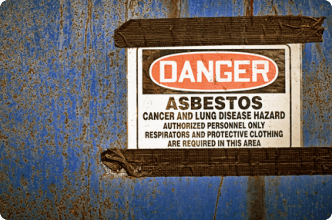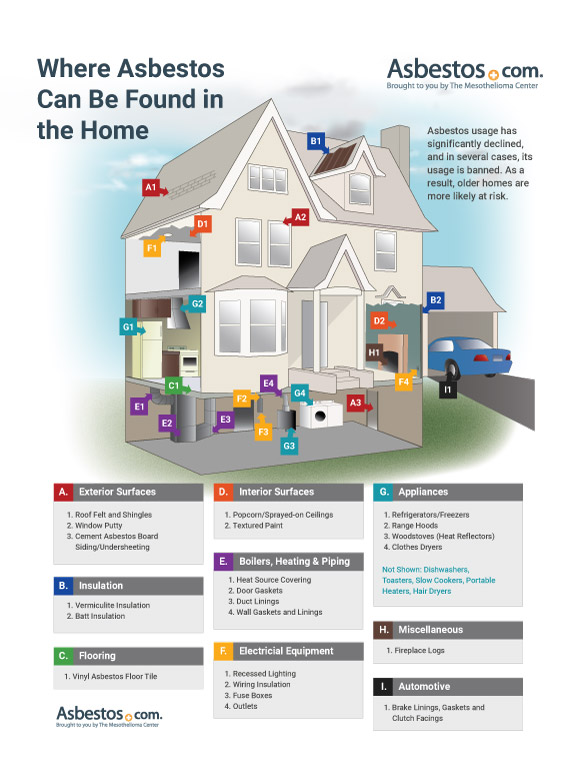Since being diagnosed with peritoneal mesothelioma nearly a decade ago, Raeleen Minchuk Prokopetz has been passionate about advocacy and raising awareness about the dangers of asbestos. Raeleen has worked with WorkSafe Saskatchewan, which shares information about the dangers of asbestos exposure. The Canadian workplace safety and injury prevention group’s mission is to help reduce the number injuries and deaths in the workplace.
Mesothelioma Prevention
The best way to prevent mesothelioma is to avoid asbestos exposure. Any level of asbestos exposure is unsafe. Wear protective gear at home or at work when working with products that may contain asbestos. Always consult a professional for asbestos testing and removal.

How Can I Prevent Mesothelioma?
Mesothelioma is preventable if you take precautions to avoid asbestos exposure. It still lingers in the places we live, work and learn. Asbestos awareness can help prevent exposure.
Ways to Prevent Asbestos Exposure
- Avoid old asbestos insulation products that can easily release dust when disturbed.
- Check for asbestos before demolition or renovation work in homes built before 1980.
- Follow Occupational Safety and Health Administration regulations if you work with asbestos.
Legacy asbestos products may still linger in structures built before the 1980s. Builders across the United States used asbestos in homes, offices, factories and schools. Workers may encounter asbestos while on the job. Settings include shipyards, power plants, chemical plants, railroads and auto mechanic shops. Asbestos exposure can lead to malignant mesothelioma, lung cancer and asbestosis.
Mesothelioma Prevention at Work
The Occupational Safety and Health Administration began regulating asbestos in 1972. It oversees employee exposure to asbestos. OSHA outlines standards for general industry (29 CFR 1910.1001) construction (29 CFR 1926.1101) and shipyards (29 CFR 1915.1001).
These standards require employers to develop a plan to minimize asbestos exposure and prevent mesothelioma and other diseases. The plan must outline a training program for employees.
OSHA Requirements to Prevent Asbestos Exposure
- Avoid using pressurized air to remove asbestos dust; use a HEPA vacuum.
- Conduct air monitoring at least once every 6 months.
- Create “regulated areas” where asbestos work is performed. Limit access to trained authorized personnel in proper personal protective equipment.
- Display warning signs.
- Maintain monitoring records, training records and medical records.
- Prevent the removal of contaminated clothing from shower or changing rooms. Store clothing in closed containers until laundered or disposed of.
- Prohibit eating, smoking, drinking, chewing tobacco or gum and applying cosmetics in these zones
- Provide medical examinations for affected employees.
- Seal waste in properly marked bags.
Someone must conduct air monitoring to determine if a plan is needed. Some employers still don’t take the steps to prevent harmful workplace exposures. Workers must take their own precautions around asbestos. You should report any unsafe work conditions to OSHA. Never perform asbestos work for your employer if you’re not trained and certified. Leave asbestos removal to professionals.

Preventing Mesothelioma at Home
Renovators of homes built before 1980 should beware of asbestos. To know if a building material in your home has asbestos, hire a professional to test a sample at a certified lab.
Homeowners can release asbestos dust into the air during renovations. Concealed asbestos materials in good condition are safe if undisturbed. Cutting, sawing, sanding, scraping or drilling into them creates a health risk.
An asbestos product that has become brittle and crumbly over time is called friable. Materials in this state are hazardous. Toxic asbestos fibers can break off and float through the air.

Asbestos Products Found in Homes
Asbestos was popular in construction before the 1980s. Millions of homes in the U.S. have asbestos-containing products. The following are common asbestos products builders often used in homes.
Asbestos Products Found in Homes
- Attic insulation
- Drywall and joint compound
- Floor tiles and adhesives
- Insulation wrapping on pipes, ducts and electrical wires
- Popcorn ceiling textures
- Roof shingles and tar
If you encounter any of these products, don’t disturb them. Your priority should be to avoid exposure. It will keep you and your family safe from asbestos.
How to Avoid Exposure at Home
As a homeowner, you can take several steps to minimize asbestos exposure. If you suspect a building material is asbestos, contact an expert to test it. The following are other steps you should take to avoid asbestos at home.
Steps for Avoiding Asbestos in Your Home
- Ask your home inspector or real estate agent if there is asbestos in your home.
- If you have an older home, don’t perform DIY renovations without checking for asbestos first.
- If you think you have found asbestos in your home, leave it alone.
- Regularly check known asbestos products in your home for signs of wear.
- If an asbestos product is worn or has become damaged, call an abatement specialist.
- Never attempt to remove asbestos without help from a licensed professional.
Asbestos products should be encapsulated or removed from the home immediately. A licensed abatement company should perform the job. It’s the best way to protect you and your family from asbestos exposure.
Regulations on Asbestos in Schools and Public Buildings
Asbestos materials were also used to build schools and public buildings. People work, learn, and visit these places daily. The U.S. Environmental Protection Agency and other agencies regulate asbestos to prevent exposure.
The National Emission Standards for Hazardous Air Pollutants regulates air pollution. It sets rules for renovations and demolitions to prevent exposure. The Asbestos Hazard Emergency Response Act requires schools to inspect for asbestos. Schools must keep the plan on site and update it with each inspection.
Monitoring Your Health to Prevent Mesothelioma
People with a history of asbestos exposure should monitor their respiratory and digestive health. Mesothelioma can develop 20 to 60 years after the initial asbestos exposure. Regular check-ups can lead to early detection, which may improve your prognosis.
A well-rounded, nutritious diet of fruits, vegetables and whole grains can lower your risk for cancer. Eat foods rich in antioxidants to help your body repair itself and fend off disease.
Keep track of changes to your health since your asbestos exposure. Note any new respiratory symptoms or new pains in your chest or abdomen. If new symptoms arise, journal the changes and share them with your doctor.
It’s essential to report any unusual symptoms to a health care provider immediately. Early intervention can improve treatment outcomes.
This cancer is extremely rare. Not a lot of doctors have ever seen it in their entire time of practicing medicine. Going to somebody who specializes in it means they know how to treat it. They can come up with different plans of treatment using a multidisciplinary approach.
Get Regular Medical Tests
People exposed to asbestos long ago can undergo screening tests. Diagnostic imaging tests, such as X-rays, detect abnormalities. Pulmonary function tests measure how well your lungs work.
If you have a history of asbestos exposure, be sure to tell your doctor. Ask how frequently you should get tested for signs of disease. If mesothelioma symptoms arise, see a doctor immediately. Watch for chest pain, shortness of breath or a persistent cough.
An early diagnosis improves mesothelioma treatment options. This can extend survival and improve quality of life.
Chemoprevention Research
Chemoprevention researchers are researching ways to prevent mesothelioma among asbestos-exposed workers. Chemoprevention uses natural substances or drugs to prevent disease. Much of this early laboratory research is still in the early stages.
Researchers at the University of Pennsylvania are investigating flaxseed lignans as chemopreventive agents. A 2018 study in Antioxidants found a flaxseed lignan that reduces asbestos damage.
The researchers are also investigating new biomarkers. They may identify exposed workers at risk of developing mesothelioma or lung cancer. The goal is to identify those at risk and use chemopreventive agents to prevent damage. A 2021 report said future studies will improve our knowledge of genetic factors. This could allow scientists to develop better strategies for the prevention and treatment.
Smoking Cessation Programs
Smoking doesn’t cause mesothelioma. There is no evidence smoking increases a person’s risk of developing mesothelioma. You can reduce the risk of asbestos-related lung cancer when you quit smoking.
Studies show smoking increases the risk of developing lung cancer. It can also worsen the symptoms of asbestosis. If you have a history of exposure, find a smoking cessation program and stop immediately.
Recommended Reading




